
Deshler is a village in Henry County, Ohio, United States. The population was 1,588 at the 2020 census.

The Capitol Limited was an American passenger train run by the Baltimore and Ohio Railroad, originally between New York City and Grand Central Station in Chicago, Illinois, via Union Station, Washington, D.C., Baltimore and Pittsburgh. For almost 48 years, it was the B&O's flagship passenger train, noted for personalized service and innovation. At the time of its discontinuation on May 1, 1971, when Amtrak took over most rail passenger service in the U.S., the Capitol Limited operated between Washington and Chicago.

The Cincinnatian was a named passenger train operated by the Baltimore and Ohio Railroad (B&O). The B&O inaugurated service on January 19, 1947, with service between Baltimore, Maryland and Cincinnati, Ohio, carrying the number 75 westbound and 76 eastbound, essentially a truncated route of the National Limited which operated between Jersey City, New Jersey and St. Louis.

The George Washington was a named passenger train of the Chesapeake and Ohio Railway running between Cincinnati, Ohio and Washington, D.C. that operated from 1932, the 200th anniversary of the birth of George Washington, to 1974. A section divided from the main train at Gordonsville, Virginia and operated through Richmond to Phoebus, Virginia. From the west, a section originated in Louisville and joined at Ashland.

Martin Luther King Jr. Plaza is the main passenger rail and intercity bus station of Toledo, Ohio.
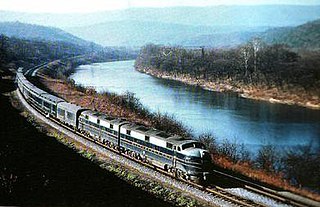
The Shenandoah was an American named passenger train of the Baltimore and Ohio Railroad (B&O), one of four daily B&O trains operating between Jersey City, New Jersey and Grand Central Station in Chicago, Illinois, via Washington, D.C., and Pittsburgh, Pennsylvania from the 1930s to the 1950s. Other B&O trains of that period on the route were the Capitol Limited, Columbian, and the Washington–Chicago Express. An alternate branch originated in Detroit and met with the Chicago part of the train at Deshler, Ohio, south of Toledo.
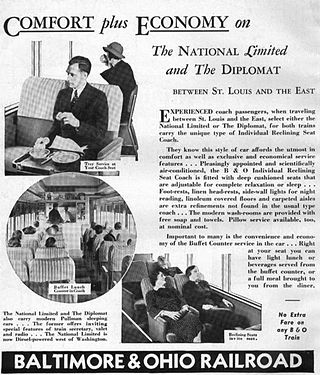
The Diplomat was a named passenger train of the Baltimore and Ohio Railroad (B&O) during the 1930s–1950s connecting New York City and St. Louis, Missouri, via Washington, D.C. Other B&O trains on the route during that period were the premier National Limited and the workhorse Metropolitan Special. The train was inaugurated in August 1930 after several changes to trains along the St. Louis Route. After World War II, the Diplomat operated as Train No. 3 westbound, and No. 4 eastbound. It was timed to provide connections to several western railroads that terminated in St. Louis, including the Frisco, the Santa Fe, Cotton Belt and Missouri Pacific, among others.

The Washington–Chicago Express, an American named passenger train of the Baltimore and Ohio Railroad (B&O), was one of four daily B&O trains operating between Washington, D.C., and Chicago, Illinois, via Pittsburgh, Pennsylvania during the 1930s–1960s. Other B&O trains of that period on the route were the Capitol Limited, Columbian, and the Shenandoah.
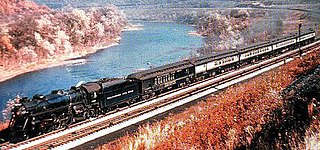
The Washingtonian was one of two daily American named passenger trains operated by the Baltimore and Ohio Railroad (B&O) during the 1940s–1950s between Baltimore, Maryland and Cleveland, Ohio, via Washington, D.C., and Pittsburgh, Pennsylvania. It was the last B&O long-haul passenger train to be powered by a steam locomotive from the venerable railroad's namesake city.

The Chicago Night Express was an American named train of the Baltimore and Ohio Railroad (B&O) on its route between Wheeling, West Virginia and Chicago, Illinois with major station stops in Newark, Ohio, Mansfield, Ohio and Willard, Ohio. The B&O inaugurated the Chicago Night Express in 1912. It was discontinued in 1956 due to declining passenger demand.
The Night Express was an American named train of the Baltimore and Ohio Railroad (B&O) on its route between Detroit, Michigan, and Louisville, Kentucky, with major station stops in Toledo, Ohio, and Cincinnati. The service was numbered Train 57 southbound and Train 58 northbound. The numbers 57/58 operated on the Detroit - Cincinnati line as early as 1921. The service was provided in conjunction with the Pere Marquette Railroad from Detroit to Toledo and with the Louisville and Nashville from Cincinnati to Louisville with connections to New Orleans.
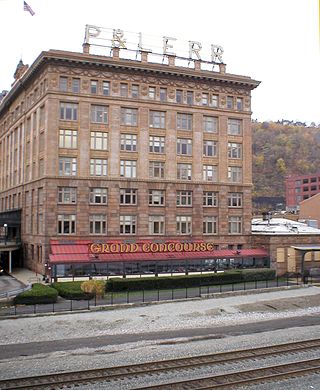
The Pittsburgh & Lake Erie Railroad Station, now Landry's Grand Concourse restaurant in Station Square Plaza in Pittsburgh, Pennsylvania, is an historic building that was erected in 1898. It was listed on the National Register of Historic Places in 1974.
The Interstate Express was a long-distance passenger train operating between Syracuse, New York, and Philadelphia, jointly operated by the Reading Railroad, the Central Railroad of New Jersey and the Delaware, Lackawanna and Western Railroad. These lines offered a long distance overnight line in Train 1301 (north-bound)/ 1306 (south-bound). Connecting service by the Baltimore and Ohio Railroad offered continuing service south from Philadelphia to Washington, D.C.
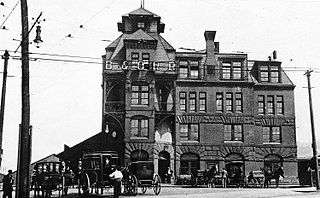
B&O Railroad Depot was one of several railroad stations in the city of Pittsburgh, Pennsylvania during the late 19th and early 20th century. The station was built in 1887, 16 years after the B&O Railroad opened its first railroad line into Pittsburgh. The station was built next to the Monongahela River. B&O railroad trains also used the Pittsburgh & Lake Erie Railroad Station for services that continued westward towards Chicago via the Pittsburgh & Lake Erie Railroad. In 1955 the station was demolished to make room for an interstate highway and remaining services were transferred to Grant Street Station. The building was designed by Frank Furness who also constructed the B&O Railroad's Philadelphia station.
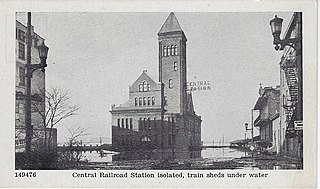
Central Station was a major train station in Louisville, Kentucky. Built in the Richardsonian Romanesque style, it served several railroad companies until the mid-20th century. It was situated at North 7th Street and West River Road, near the Ohio River waterfront, and it was also known as the 7th Street Depot.

Akron Union Station was a series of three union stations serving several passenger railroads in Akron, Ohio from 1852 to 1971. The station's tenants included the Baltimore & Ohio Railroad, Pennsylvania Railroad and Erie Railroad. It was a hub, serving train companies serving destinations in different directions, west, north, south and east.
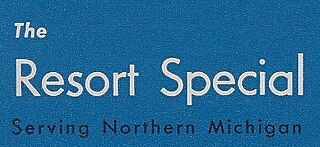
The Resort Special was a seasonal night train from Chicago, renowned for serving resort towns such as Traverse City, Charlevoix, Petoskey on the northwestern part of Michigan’s lower peninsula. Begun by the Pere Marquette Railway, it was a rare instance of a named Pere Marquette train continuing after the Chesapeake & Ohio absorbed the Pere Marquette Railway in 1947. In 1960s, the C&O shifted the Resort Special name to a White Sulphur Springs, West Virginia to New York City route.
Lexington Union Station was a union station, serving most of the railroads passing through Lexington, Kentucky. Located on Main Street, just west of Walnut Street it served the Chesapeake and Ohio Railway and the Louisville and Nashville Railroad from 1907 to 1957.
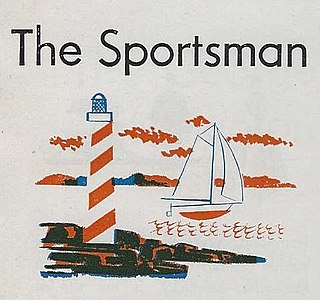
The Sportsman was a named passenger night train of the Chesapeake and Ohio Railway. It was the Chesapeake and Ohio's long-standing train bound for Detroit from Washington, D.C., and Phoebus, Virginia, on the Chesapeake Bay, opposite Norfolk, Virginia. It was unique among C&O trains for its route north from the C&O mainline in southern Ohio. For most of its years it had a secondary western terminus in Louisville at its Central Station.
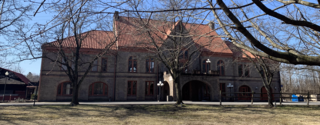
Youngstown station is a former passenger railroad station in Youngstown, Ohio. The station is on the ex Baltimore and Ohio Railroad, and was a B&O passenger station for most of the twentieth century. The station was built in 1905 and operated as a passenger station until 1971, when the B&O yielded passenger train service to Amtrak. It was later a passenger station for Amtrak through the 1990s and early 2000s.



















